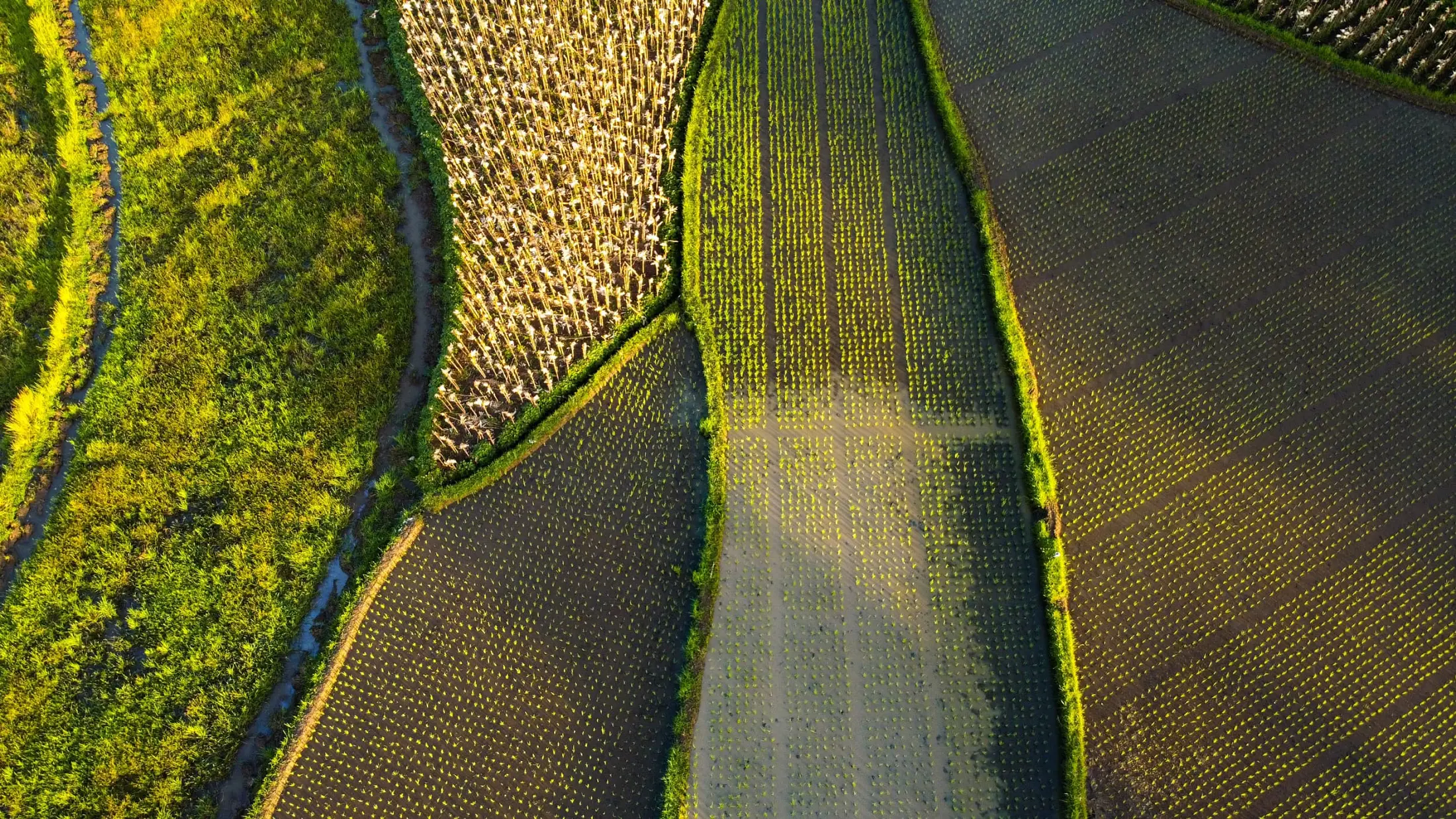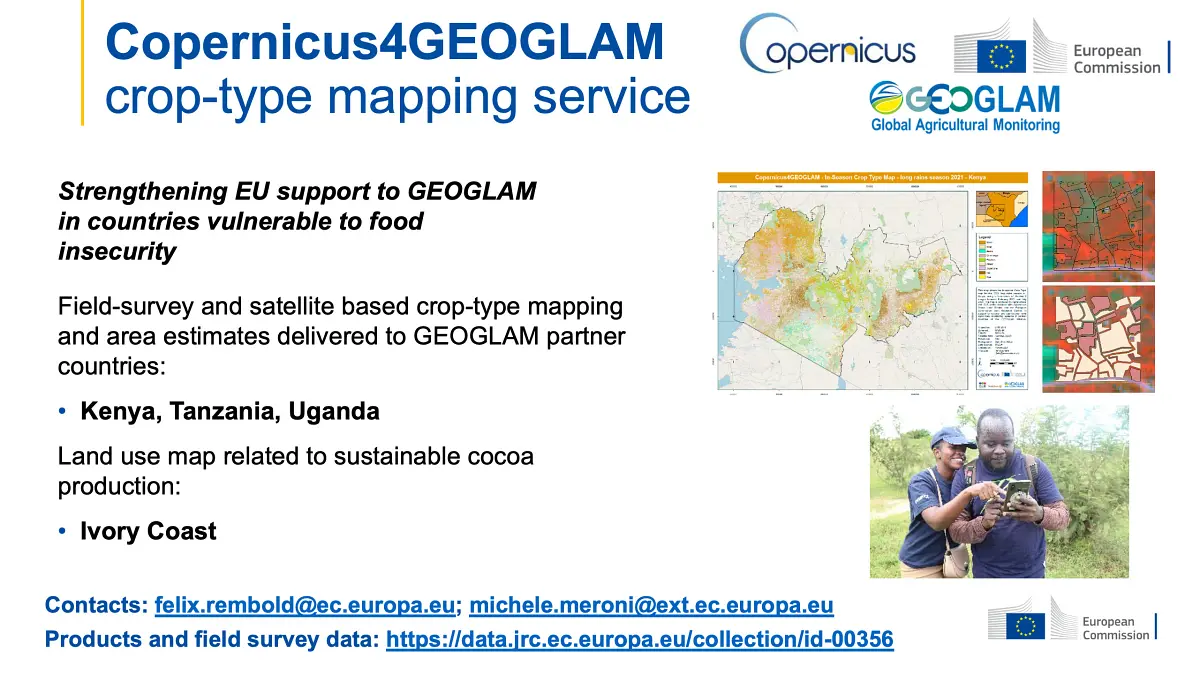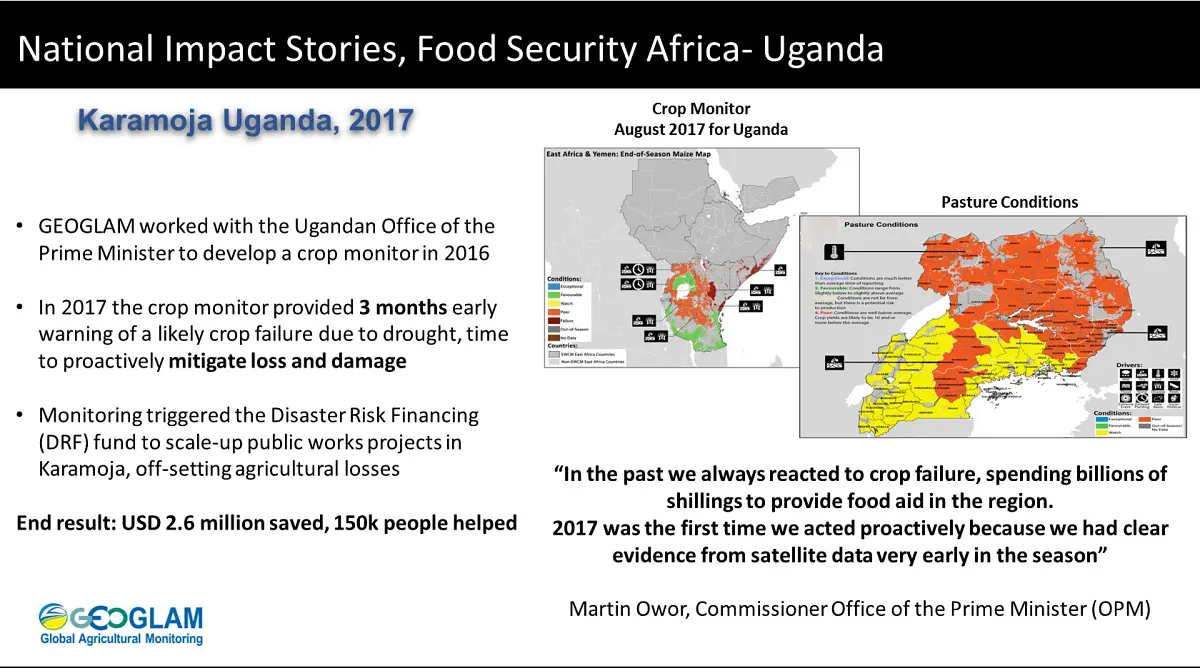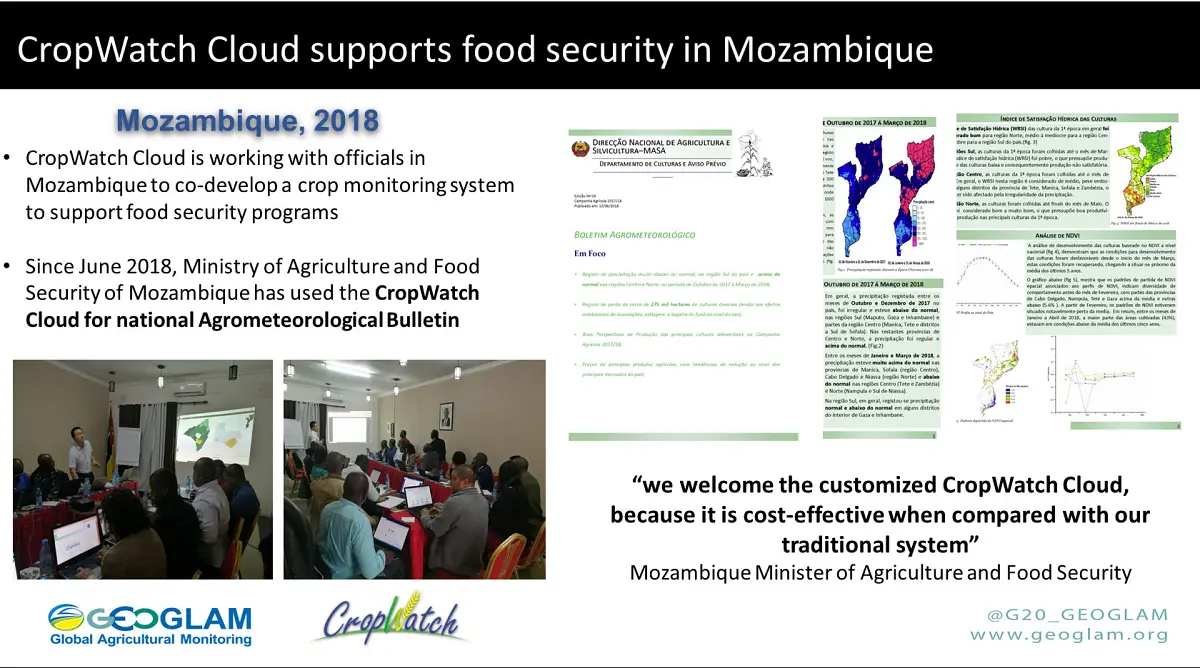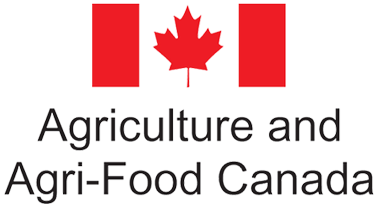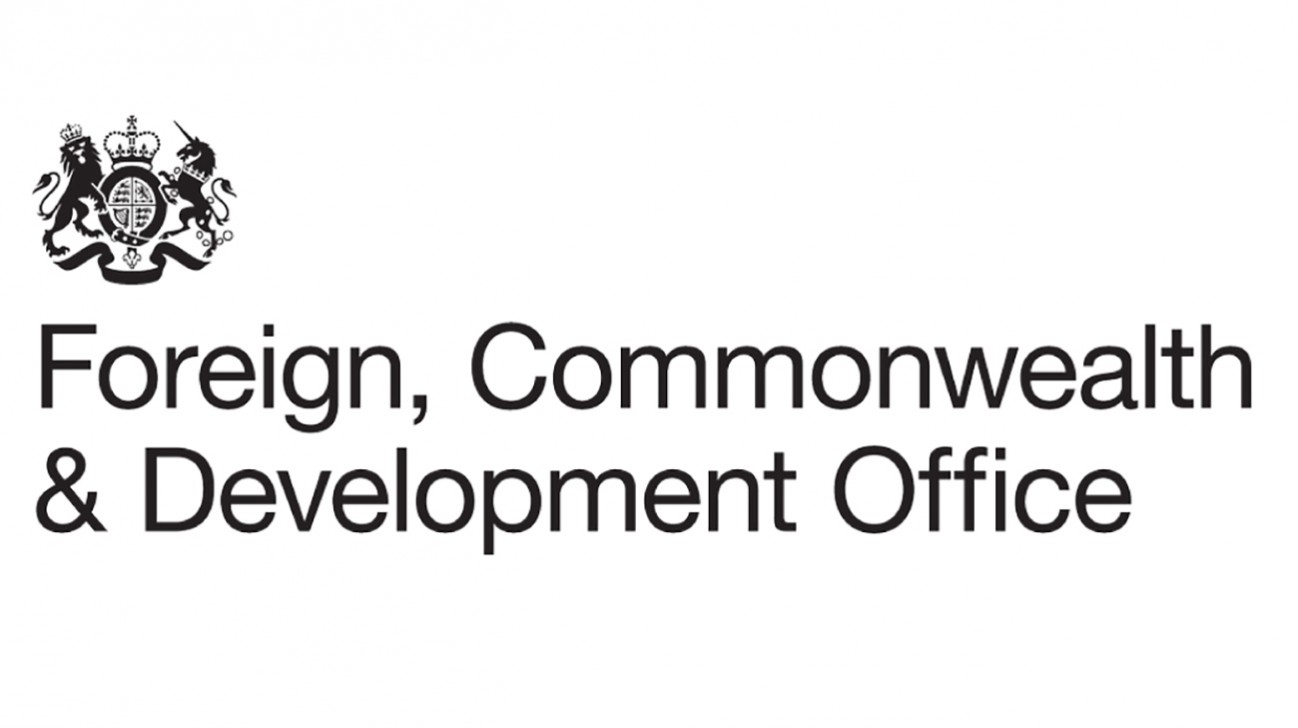GEOGLAM is an open community built around an interest in agricultural monitoring. Together, its members work toward strengthening the international community’s capacity to use Earth observation data. GEOGLAM’s core activities include:
- Fostering open communication and coordination with the Committee on Earth Observation Satellites (CEOS)
- Characterizing and quantifying observation requirements to create agricultural variables
- Defining “Essential Agricultural Variables for GEOGLAM”
GEOGLAM has made significant progress in support of monitoring and progression of knowledge management is a high priority for the community. By bringing together experts from a range of backgrounds—from agriculture scientists and statisticians to policymakers and remote sensing professionals—GEOGLAM has made significant progress in building systems to monitor food insecurity. Sharing this knowledge and information is a high priority for the community. Currently, GEOGLAM is working with the GEO Secretariat to develop the GEO Knowledge Hub (GKH), which will provide a space for sharing agricultural monitoring resources and information.
Because agricultural monitoring systems are constantly changing and improving, GEOGLAM’s R&D is guided by the operational communities’ practical needs. The Joint Experiments for Crop Assessment and Monitoring (JECAM) is one of GEOGLAMS’ primary research focal points. JECAM experiments with monitoring and modelling methods for crop area, condition monitoring, and yield estimation to identify best practices for agricultural systems.
Beyond the JECAM, there are a number of projects that contribute to GEOGLAM outcomes:
The AMIS Crop Monitor—a direct response to the G20 Action Plan on Food Price Volatility and Agriculture—is an initiative that facilitates international networking and data sharing to build on existing agricultural monitoring programs.
National and regional crop monitors are best placed to collect high quality in-situ data. For this reason, they can play a significant role in improving global crop monitoring systems. Crop Monitor for Early Warning (CM4EW) leverages national agencies’ expertise, working with them to create monitoring information for global food security applications.
In 2019, GEOGLAM established the Capacity Development Working Group (CapD WG) to share experiences with the community and develop best practices to improve national monitoring uptake.
